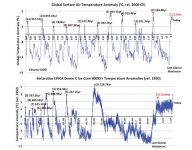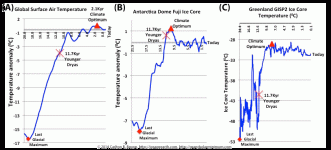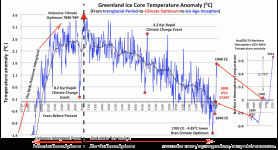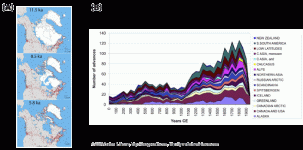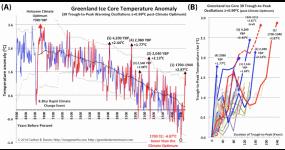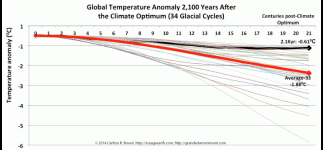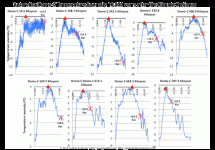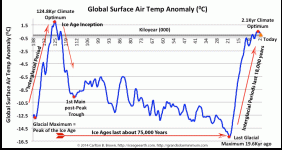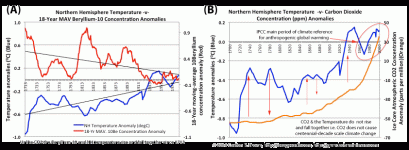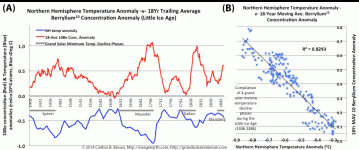Earth entered the ice age millennia ago
Nine of Antarctica EPICA Dome C’s glacial cycle temperature peaks (climate optima) were compared .....
The last ice age did not end 11,700 years ago, that was the Younger Dryas
Reconstructed global, Antarctic, and Arctic glacial cycle temperatures from the last glacial .....
Greenland’s ice core confirms the Arctic entered its ice age 8,000 years ago
A graphic of Greenland’s ice core climate reconstruction from 9080 BCE (after the Younger Dryas) .....
There was less ice at the Holocene Climate Optimum than today
The key take-home message is that there was less glacier ice in the Arctic at the Holocene Climate .....
Extreme centennial-scale warming phases switch abruptly to a cooling phase
The conclusion I drew from this analysis was two-fold. Firstly, there is a greater probability the .....
The slowest ice age descent in two million years (Global)
The first 2,100 years of temperature data after a climate optimum was extracted for the last 34 .....
The slowest ice age descent in 800,000 years (Antarctica)
ce core temperature data from Antarctica’s EPICA Dome C reveals that the temperature has only .....
The anatomy of a glacial cycle
During the last 1 million years the average glacial cycle has lasted for 92,900 years, the average .....
Global warming started in 1700 CE before significant human activity
Global warming started in 1700 before significant human activity. The rise in carbon dioxide (CO2) .....
Cold climates always follow a Grand Solar Minimum
During the Little Ice Age, the cold Northern Hemisphere climate lagged behind the decline phase of .....

